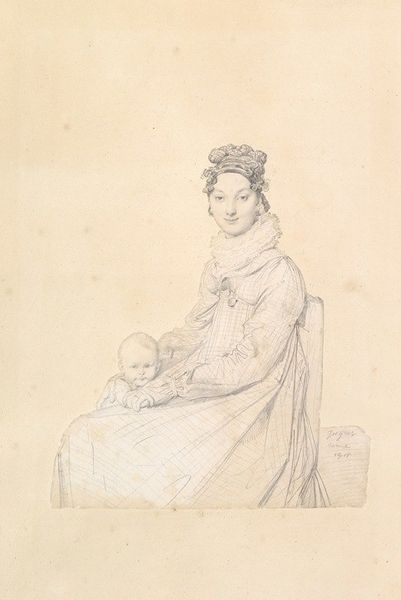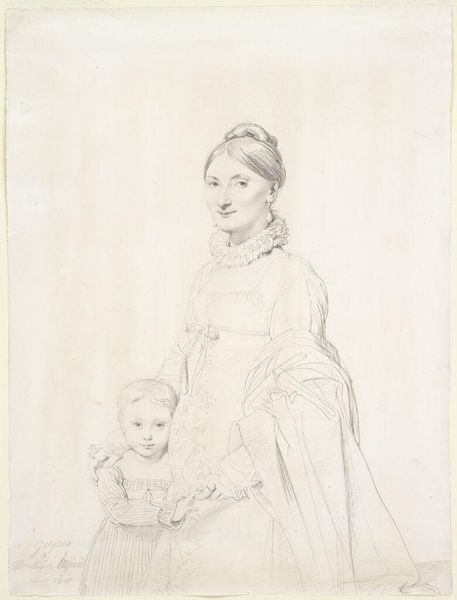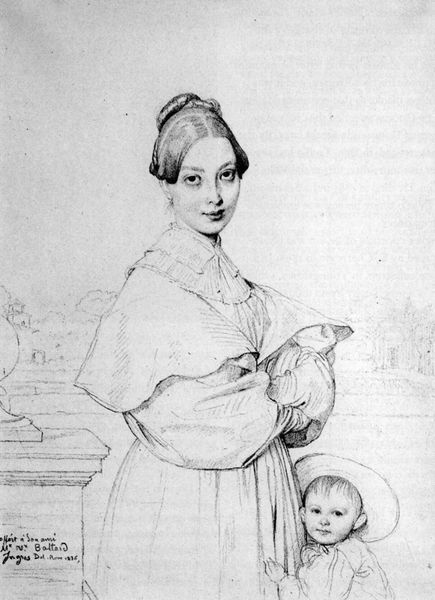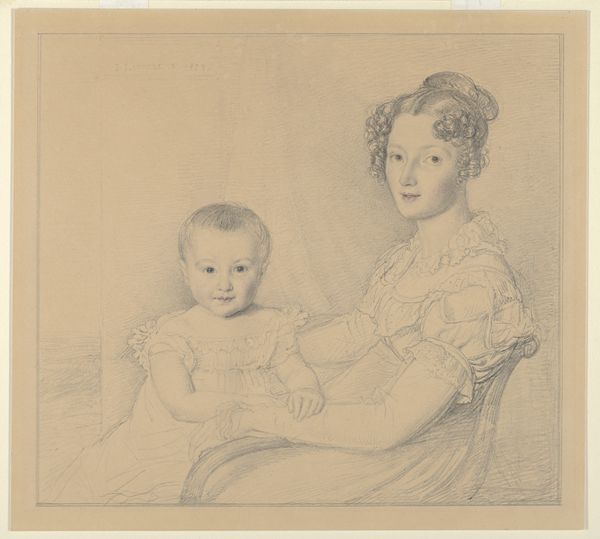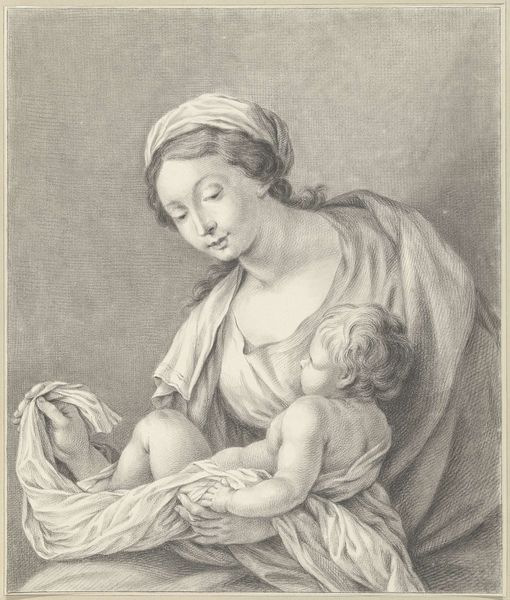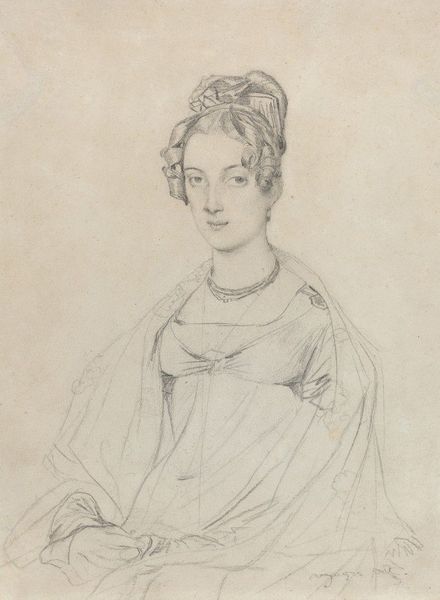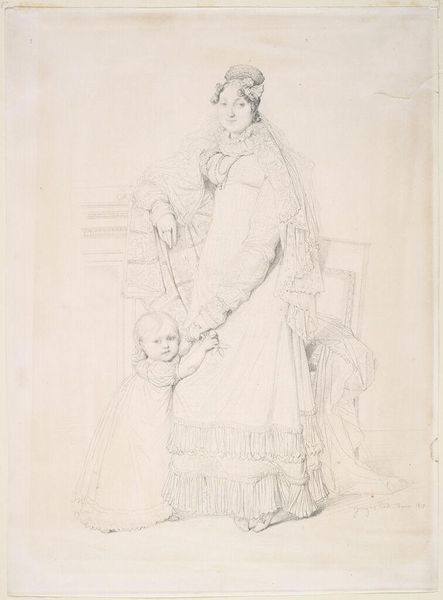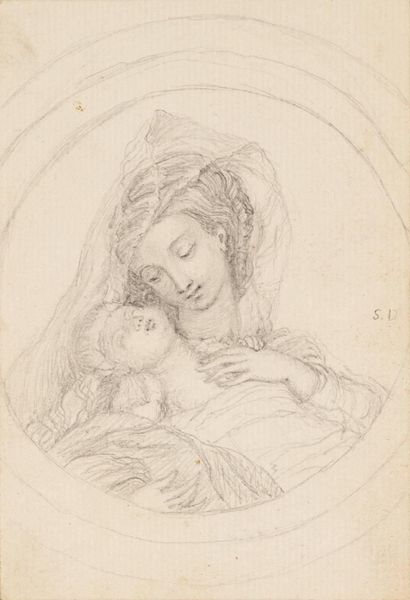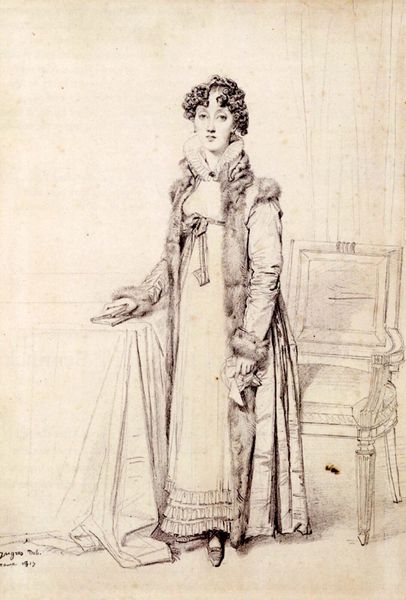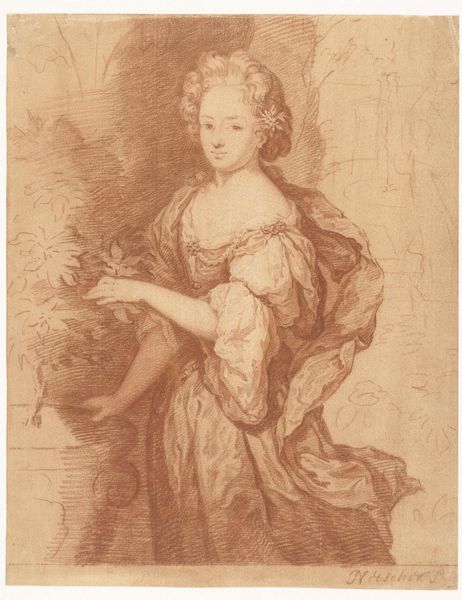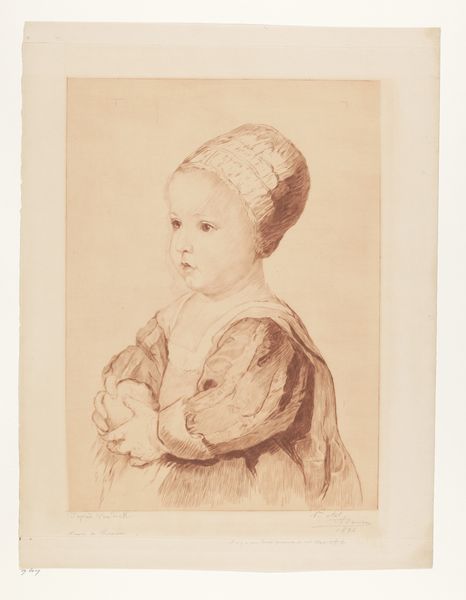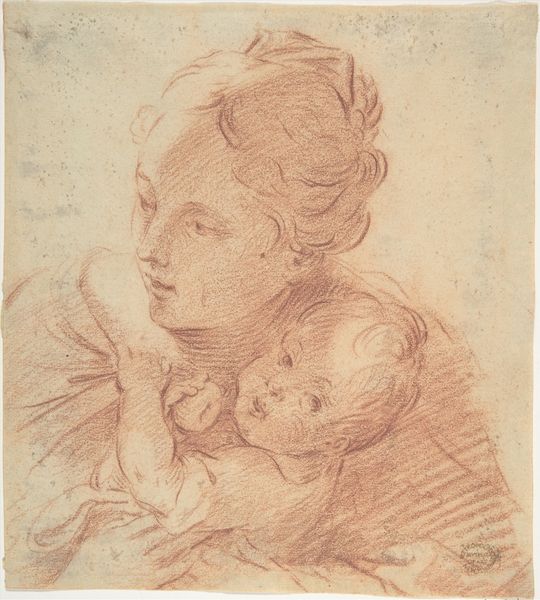
Madame Alexandre Lethiere, born Rosa Meli, and her daughter, Letizia
0:00
0:00
jeanaugustedominiqueingres
Private Collection
drawing, pencil
#
portrait
#
drawing
#
pencil sketch
#
charcoal drawing
#
figuration
#
child
#
pencil drawing
#
intimism
#
sketch
#
group-portraits
#
romanticism
#
pencil
#
northern-renaissance
Copyright: Public domain
Curator: This drawing is by Jean-Auguste-Dominique Ingres, and it portrays Madame Alexandre Lethière, née Rosa Meli, along with her daughter, Letizia. Editor: A pencil sketch, so delicate… and yet, it projects this powerful aura of serenity. Is it just me, or does the gaze of the subject feel almost piercing? Curator: Ingres was celebrated for his almost uncanny ability to capture the likenesses and personalities of his sitters, especially through his portrait drawings. We see that talent at work here. I always find it fascinating that he seems to anticipate photography. Editor: Absolutely! Thinking about the pencil itself, the kind of graphite, where it was mined, the wood that holds it… these portraits depended on a whole economy of extraction and crafting. Someone shaped that pencil, allowing Ingres to immortalize this bourgeoise. What’s amazing to me is thinking about the drawing as a crafted, manufactured thing. It’s really intense and makes me think about portrait factories and how we treat sitters in commercial and advertising art. Curator: And despite its delicate, sketch-like quality, it's far more complex than it initially appears. The details of the mother's dress, for instance, the soft texture of her ruff... you can almost feel the fabric. The baby, though... it’s quite the contrast in tonality, isn’t it? Editor: Absolutely. It shows the social expectation for women of a certain class, and that labor of childcare. And who made the dress she's wearing? Whose labor are we actually admiring? Who spun that cotton or linen, sewed it? Whose fingers and eyes created the textiles that Ingres captured with a humble pencil? I just imagine Ingres paying somebody in his atelier, likely poorly. Curator: I find myself contemplating that intersection of material reality and artistic representation. Ingres, with such simplicity, allows us to delve into societal roles, craft histories, and human expression, it really opens a door, doesn't it? Editor: Indeed, it's amazing how one little pencil drawing, one manufactured object, can elicit such profound inquiries and imaginative meanderings about its own coming into being. It opens this portal into not only an economic world of resources but its potential to reproduce and re-establish hierarchies and expectations of production. It seems we really did scratch the surface of where matter meets art and culture.
Comments
No comments
Be the first to comment and join the conversation on the ultimate creative platform.
